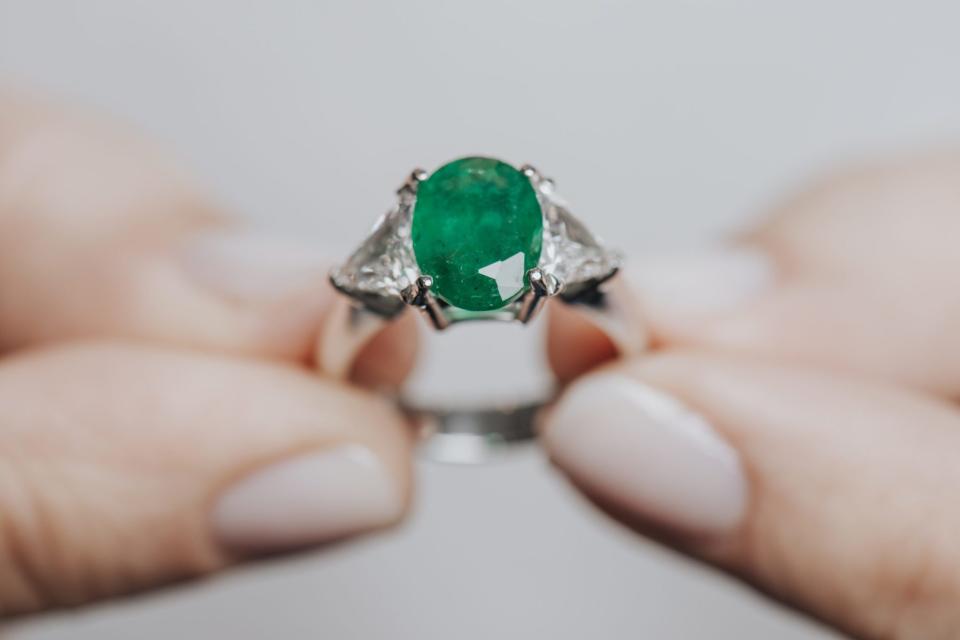Lab-grown obsessed Gen Z and millennials are increasingly favoring gemstones over diamonds

Diamonds are a girl's best friend—or at least, they used to be. Today, hopeful fiancés are pinning on being proposed to with a tourmaline, emerald or sapphire instead.
More than 15% of engagement rings currently on the market are colored gemstones, up from about 5% a decade ago—and “sapphires and rubies” are hot right now, says Ankur Daga, founder and CEO of fine jewelry e-commerce company Angara.
Wholesale prices for sapphire gemstones are up 12% per year over the past three years, Daga told CNBC. Meanwhile, for emeralds it's 13%, and rubies 17%.
“Some of the more niche stones, like pearls and opals, are up over 20% a year. Tourmalines are up all the way up to 36% a year,” he added.
By comparison, the compound annual growth rate of the S&P 500 stock index is 10.5% over the past three years.
Some would even chuck in their traditional diamond solitaire ring in favor of something more on trend: Angara’s research found that more than 20% of people would upgrade their engagement ring to a colored gemstone—such as Princess Diana’s famous blue sapphire style or even a pink diamond—if they could.
On TikTok, the hashtag #emeraldengagementring has amassed nearly 37 million views, meanwhile, sapphire engagement rings have piqued the interest of over 65 million viewers.
Even when searching the generic term, engagement rings, many of the top viewed videos show off “alternative” and “non-tradition” styles.
Though people are increasingly turning to lab-grown diamonds, because they’re supposedly more sustainable than the mined alternative, 75% of customers shopping for colored gemstones still prefer natural, Daga said.
“While [lab-grown gemstones] are chemically, physically, and optically identical to natural, I think the key difference is they look so perfect as a result where most colored gemstones have inclusions,” he explained. “Those inclusions are really what make them pretty or will make them unique and different.”
https://www.tiktok.com/@oorejewelry/video/7264924491535371562?lang=en
Why are gemstones gaining popularity?
Despite claiming to be the most conscientious generation yet, none of the jewelers that CNBC spoke to mentioned climate change as a factor behind Gen Z and millennials' shifting preference from clear diamonds to colorful gemstones.
Instead, they cited a movement towards individuality and a more personalized approach, with birthstones becoming an increasingly popular choice to propose.
Brilliant Earth CEO Beth Gerstein, added that Gen Z buyers specifically say "they want something that is unique to them and reflective of their personal style.”
At the same time, young people today are increasingly witnessing their favorite celebrities sport color gemstones: When Ben Affleck proposed to Jennifer Lopez for the second time, he popped the question with a green diamond because it’s the singer’s “lucky color”.
Meanwhile, Victoria Beckham has upgraded her engagement ring—for the 15th time, no less—from a traditional transparent diamond to its yellow sister.
This story was originally featured on Fortune.com

 Yahoo Finance
Yahoo Finance